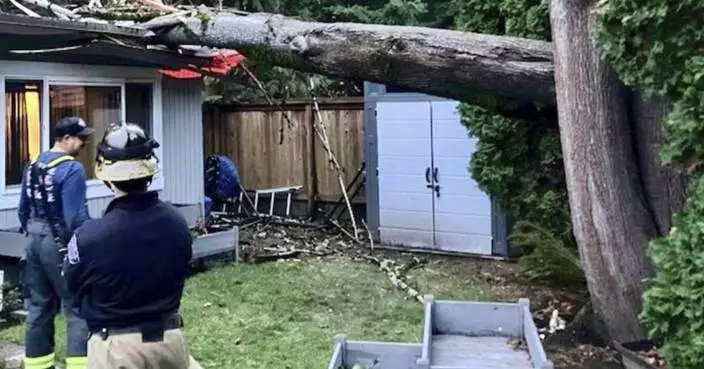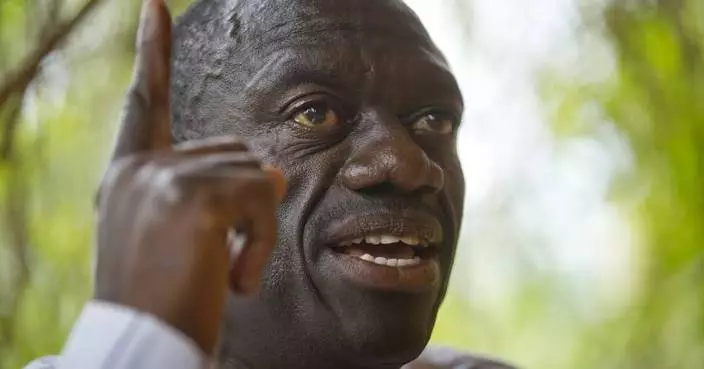HONG KONG (AP) — Asian stocks were mostly lower on Tuesday, despite gains on Wall Street, as worries mounted over escalations in the Russia-Ukraine war.
U.S. futures edged higher while oil prices were little changed.
On Tuesday, Ukraine fired several American-supplied longer-range missiles into Russia, according to the official, marking the first such use in nearly 1,000 days of war. On the same day, Russian President Vladimir Putin formally lowered the threshold for Russia’s use of its nuclear weapons.
In Japan, the Nikkei 225 slipped 0.2% to 38,352.34 after the Finance Ministry reported the country recorded a trade deficit in October, for a fourth straight month. Exports rose 3.1% from a year earlier as a weak yen and the rising price of energy kept import costs high. A trade deficit occurs when the country is importing more goods and services than it is exporting.
Shares of Seven & i Holdings Co., the company that owns over 80,000 7-Eleven convenience stores worldwide, soared 8.4% on Wednesday after local media reported that the founding family plans to raise over 8 trillion yen ($51.66 billion) to take the company private within this financial year.
China's central bank announced it will keep its benchmark lending rates unchanged after it cut its one-year lending rate to 3.1% in October. Hong Kong’s Hang Seng edged 0.1% higher to 19,687.10, and the Shanghai Composite gained 0.1% to 3,979.15.
Australia’s S&P/ASX 200 dipped 0.6% to 8,326.30. South Korea’s Kospi added 0.4% to 2,482.29.
On Tuesday, the S&P 500 rose 0.4% to 5,916.98 after erasing an early drop of 0.7%. The Nasdaq composite also shook off an early loss to turn 1% higher to 18,987.47, while the Dow Jones Industrial Average slipped 0.3% to 43,268.94.
Nvidia’s 4.9% climb accounted for most of the index’s gain. The chip company’s stock rallied ahead of its profit report for the latest quarter, which is coming later Wednesday, and vaulted its gain for the year to nearly 197% thanks to the craze around artificial-intelligence technology.
The worries on the Ukraine-Russia conflict sent investors into U.S. Treasury bonds, which are seen as some of the world’s safest investments. The rise in their prices in turn lowered their yields, and the 10-year Treasury yield fell to 4.39% from 4.41% late Monday.
Gold also rose 0.6% and recovered some of the losses it sustained following Donald Trump’s victory in the U.S. presidential election, as investors herded into places traditionally considered safer during times of trouble.
Walmart climbed 3% after topping forecasts for both profit and revenue. The nation’s biggest retailer said it saw broad-based strength across its categories, including sales made both online and in stores. It also said it served more upper-income households, while raising its forecasts for sales and profit for the full year.
Lowe’s likewise delivered bigger profit and revenue for the latest quarter than analysts expected, but its stock nevertheless dropped 4.6%. A report in the morning said construction crews broke ground on fewer new homes last month than economists expected, and rival Home Depot slipped 0.9%.
Other big companies set to report their latest quarterly results this week include Target on Wednesday and Deere & Co. on Thursday.
In other dealings early Wednesday, benchmark U.S. crude oil edged 15 cents higher to $69.39 per barrel in electronic trading on the New York Mercantile Exchange.
Brent crude, the international standard, added 10 cents to $73.41 per barrel.
The dollar rose to 155.47 Japanese yen from 154.54 yen. The euro slipped to $1.0588 from $1.0598.
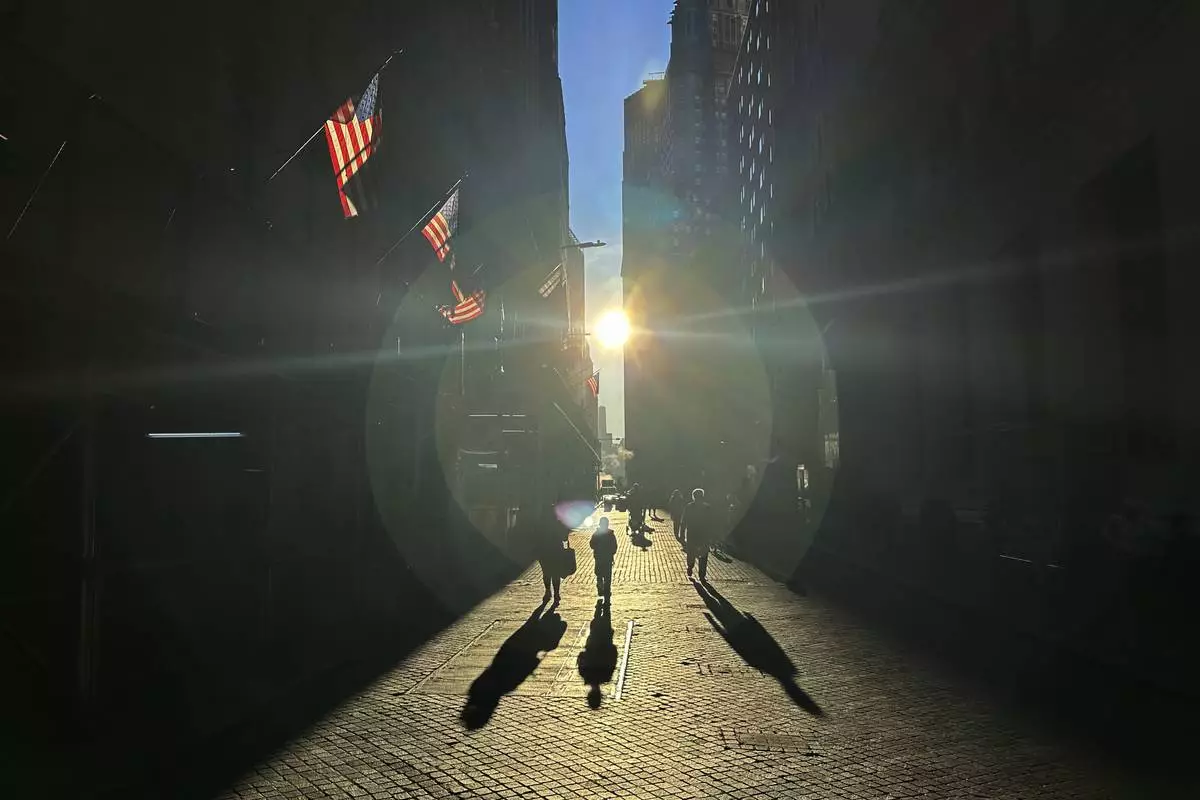
FILE - The morning sun shines on Wall Street in New York's Financial District on Tuesday, Nov. 19, 2024. (AP Photo/Peter Morgan)

Currency traders watch their computer monitors near the screens showing the Korea Composite Stock Price Index (KOSPI), left, the foreign exchange rate between U.S. dollar and South Korean won, center, and the Korean Securities Dealers Automated Quotations (KOSDAQ), at a foreign exchange dealing room in Seoul, South Korea, Wednesday, Nov. 20, 2024. (AP Photo/Lee Jin-man)
BAKU, Azerbaijan (AP) — With time running down, negotiators at the United Nations annual climate talks on Wednesday returned to the puzzle of finding an agreement to bring far more money for vulnerable nations to adapt than wealthier countries have shown they're willing to pay.
Pressure was building to drive a deal by the time COP29, as this year's summit is known, concludes this week. COP29 President Mukhtar Babayev asked negotiators to clear away the technical part of talks by Wednesday afternoon so they can focus on substance.
That substance is daunting. Vulnerable nations are seeking $1.3 trillion to deal with damage from climate change and to adapt to that change, including building out their own clean-energy systems. Experts agree that at least $1 trillion is called for, but both figures are far more than the developed world has so far offered.
Half the world away in Rio, Brazil, where the Group of 20 summit was wrapping up on Tuesday, the United Nations Secretary-General Antonio Guterres told the group of the world’s largest economies that “the success of COP29 is largely in your hands.”
“That goal, the financial goal, in its different layers, must meet the needs of developing countries, beginning with a significant increase in concessional public funds,” he said.
And the president of Brazil, Luiz Inácio Lula da Silva, said developed nations should consider moving their 2050 emission goals forward to 2040 or 2045.
“The G20 is responsible for 80% of greenhouse effect emissions,” he said. “Even if we are not walking the same speed, we can all take one more step.”
Negotiators are fighting over three big parts of the issue: How big the numbers are, how much is grants or loans, and who pays. The “how big” question is the toughest to negotiate and will likely be resolved only after the first two are solved, COP29 lead negotiator Yalchin Rafiyev told The Associated Press in an interview Tuesday.
“There are interlinkages of the elements. That’s why having one of them agreed could unlock the other one,” Rafiyev said.
Alden Meyer of the European think tank E3G and veteran negotiations analyst summed up the state of negotiations on Wednesday by saying the word of the day at the talks is “circle… as in going around in circles."
“All presidencies must at this point show that they have what it takes to move from administration to leadership," German climate envoy Jennifer Morgan said. "They must set the expectation for ambitious outcomes across the board. ... It is now up to the presidency to ensure that we move at full speed towards a green future.”
The current goal of $100 billion annually was set in 2009. Rich nations have so far been reluctant to offer a starting figure to replace that. Rafiyev said the conference presidency has sought to pressure them, telling them that the figure should be "fair and ambitious, corresponding to the needs and priorities of the world.”
India’s junior environment minister Kirti Vardhan Singh, who is at the Baku talks, said that “the Global South are bearing a huge financial burden.”
“This is severely limiting our capacity to meet our developmental needs,” he said.
The European Union is expected to finally offer a figure, likely ranging from $200 billion to $300 billion annually, Linda Kalcher, executive director of the think tank Strategic Perspectives, said Tuesday.
That wasn't enough for Debbie Hillier, climate policy lead for the humanitarian group Mercy Corps, who called it “wildly out of step with the needs of developing countries” and a failure by richer nations to live up to the agreement of the 2015 Paris climate talks.
“If $200-300 billion is indeed the ballpark for what developed countries will offer, then this is a betrayal — a betrayal of the communities around the world who, whilst least responsible for climate change, are bearing its most devastating consequences," she said.
Some wealthy nations were talking of loans that could be leveraged to attract other money — grants, more loans and private investment — to multiply the funds they can offer.
But poorer nations say they are already drowning in debt and most money should come in the form of grants.
“It is possible to find constructive, innovative solutions," said Denmark’s climate minister Lars Aagaard. “But it requires trust.”
The Associated Press’ climate and environmental coverage receives financial support from multiple private foundations. AP is solely responsible for all content. Find AP’s standards for working with philanthropies, a list of supporters and funded coverage areas at AP.org.
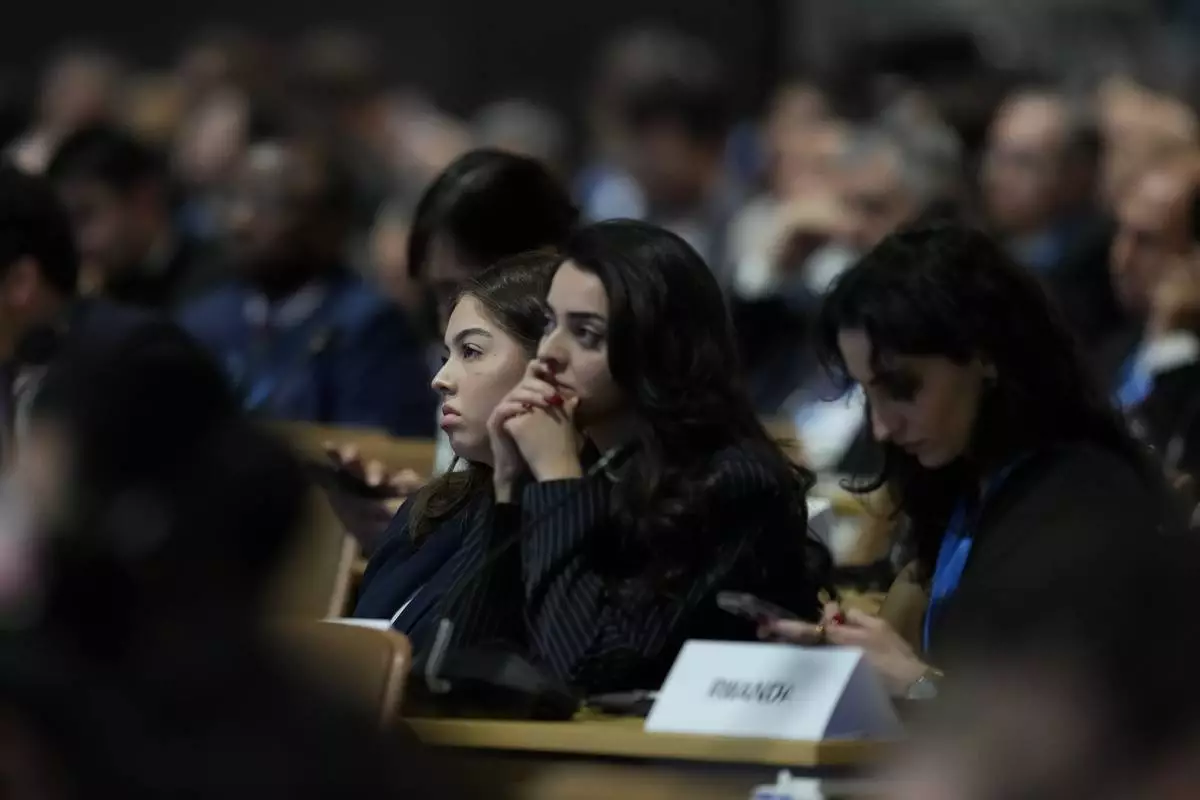
Attendees listen during a session on urbanization at the COP29 U.N. Climate Summit, Wednesday, Nov. 20, 2024, in Baku, Azerbaijan. (AP Photo/Rafiq Maqbool)
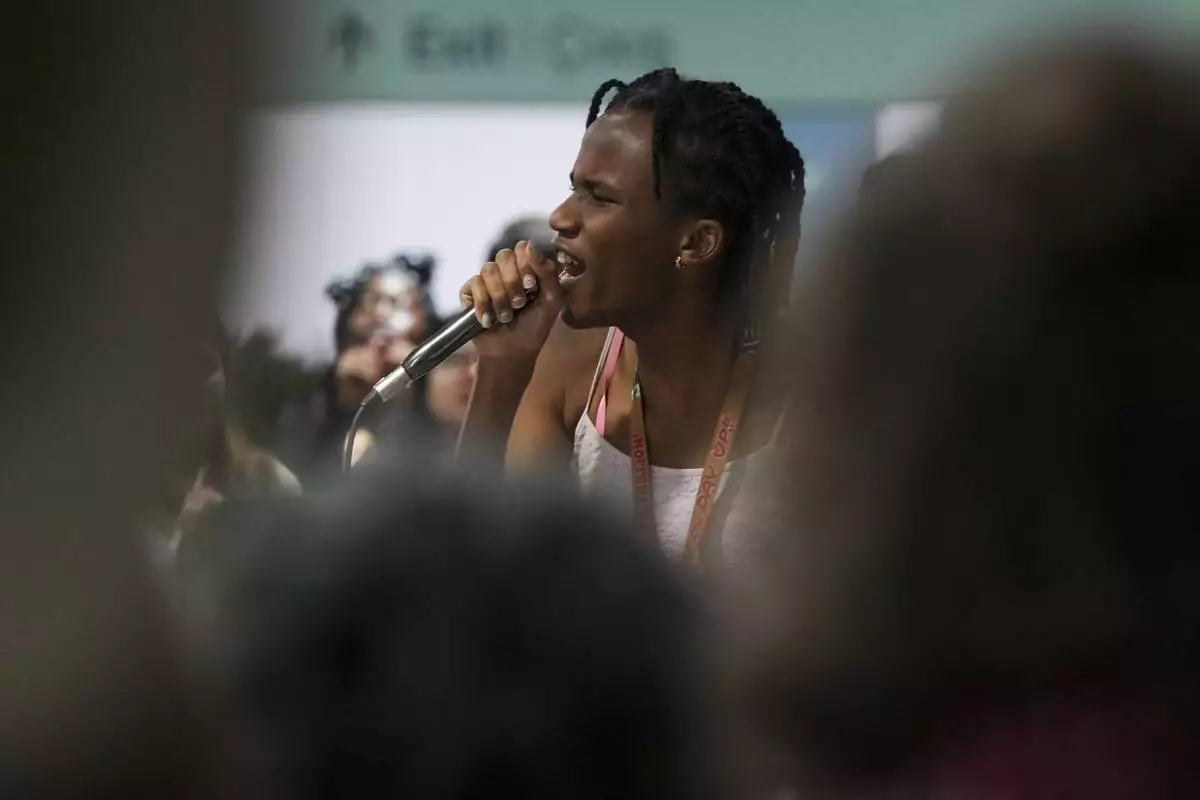
Activist Erica Njuguna speaks during a demonstration on climate finance at the COP29 U.N. Climate Summit, Wednesday, Nov. 20, 2024, in Baku, Azerbaijan. (AP Photo/Peter Dejong)
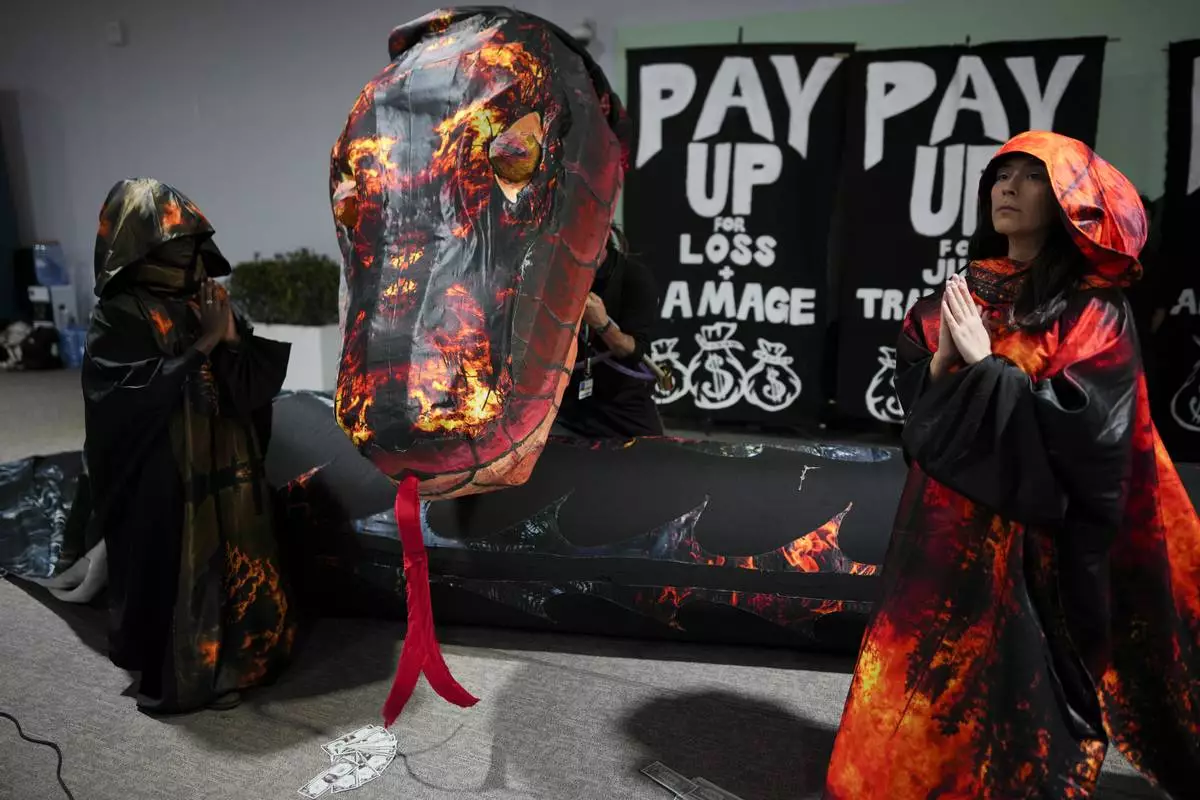
Activists participate in a demonstration for climate finance at the COP29 U.N. Climate Summit, Wednesday, Nov. 20, 2024, in Baku, Azerbaijan. (AP Photo/Peter Dejong)

Activists participate in a demonstration for climate finance at the COP29 U.N. Climate Summit, Wednesday, Nov. 20, 2024, in Baku, Azerbaijan. (AP Photo/Peter Dejong)
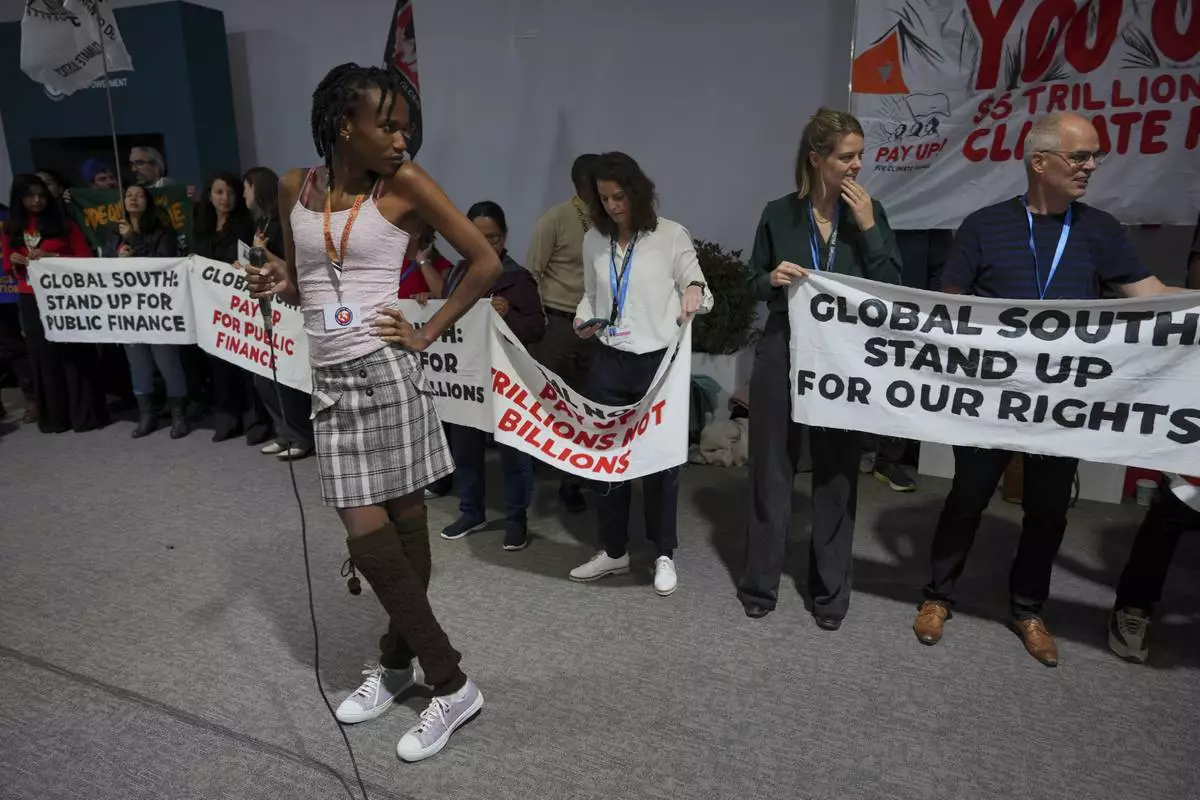
Activist Erica Njuguna leads a demonstration with signs reading "Global South: stand up for public finance" at the COP29 U.N. Climate Summit, Wednesday, Nov. 20, 2024, in Baku, Azerbaijan. (AP Photo/Peter Dejong)
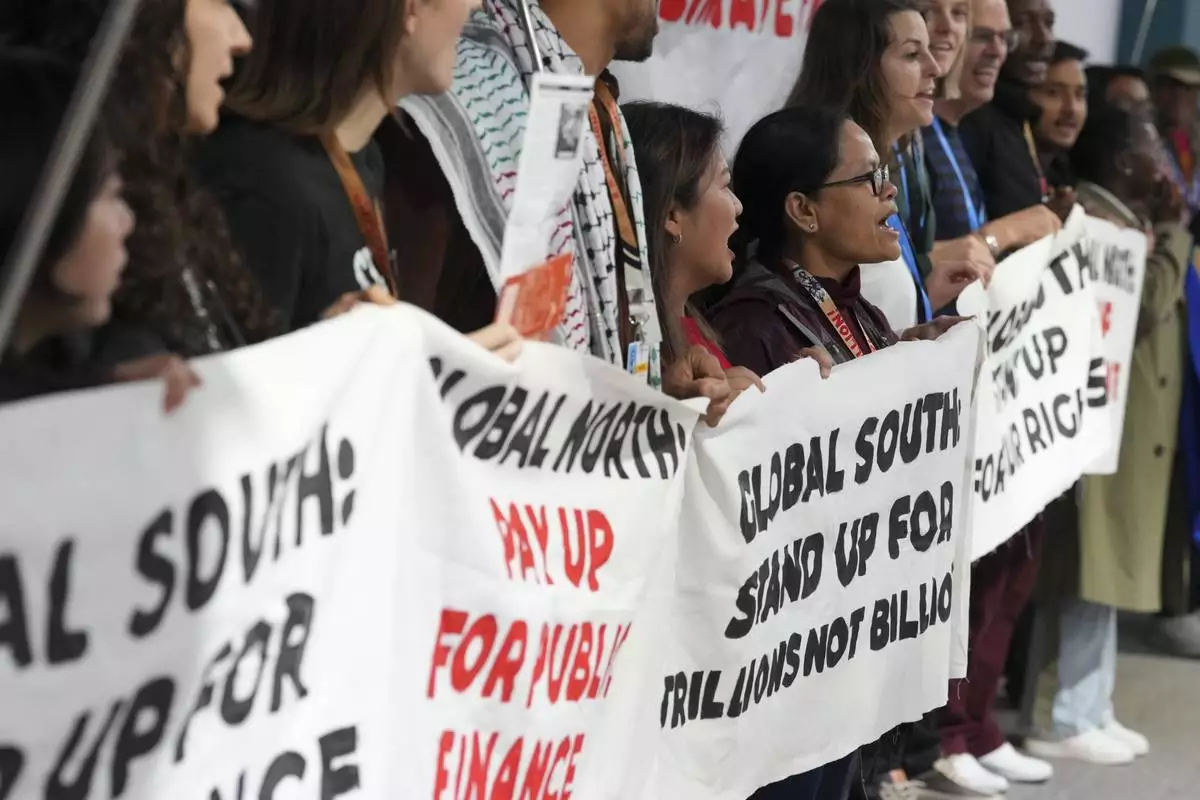
Activists participate in a demonstration for climate finance at the COP29 U.N. Climate Summit, Wednesday, Nov. 20, 2024, in Baku, Azerbaijan. (AP Photo/Peter Dejong)











